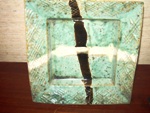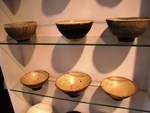Japanese Folk Arts

People dwell on true beauty…”functional beauty”…especially when it comes to a thing they use day after day. As the Taisho Era arrived, practical and popular objects of craftwork (shominteki kougeihin…abbreviated as “mingei”) which had a simplicity that hadn’t been an object of merit up to that time in art history, showed a new value and caused a folk art movement which would spread widely around the world. Muneyoshi Yanagi, known as the main force behind the spread of the folk art ideology, helped to spread the folk art movement within Japan alongside Shoji Hamada and Kanjiro Kawai. Due to the outbreak of the independence movement on the Korean peninsula at that time, there was an interest in the simple works made there during the Osho Era, and in the idea of gathering Korean goods mainly consisting of porcelain goods and bringing them back to Japan to display to the public. A Japanese folk arts museum was established in Komaba, Tokyo to help spread the beauty of folk arts. After Yanagi’s death, Shoji Hamada was made the 2nd director of the folk arts museum to further ensure the spread of Yanagi’s ideology, and he created his own simple, powerful and original style. By using just a hand pottery wheel, he created many simple models. With a dynamic application of glaze, he took pride in his simple and powerful style. Hamada also set up the Mashiko Sankokan Museum to display domestic and foreign works of folkcraft that he had personally collected.

Hamada, who had sensed “functional beauty” in everyday items such as pots and bowls that had been made in Mashiko, designated the city as the city for pottery making. As a result, the name of Mashiko spread widely throughout Japan. Its uniquely massive earthenware along with the folk ceramics that had the dynamic application of glaze, also common in Hamada’s style, fused into them were considered masterpieces. Afterwards, many craftsmen also chose Mashiko as their starting point to create their works. Until that time, there had been no framework for the tradition to be bound to, but artists with their own respective sensitivities and personalities to express started to congregate in Mashiko, and eventually it became the Kanto region’s primary ceramics town, and a centre for folk arts. Many nations of the world modernized and industrialized, and yet the handicraft industry known as folk arts strongly survived. In addition, it can be considered to be one of the characteristics of ceramics specific only to Japan as a firm part of Japanese culture.
